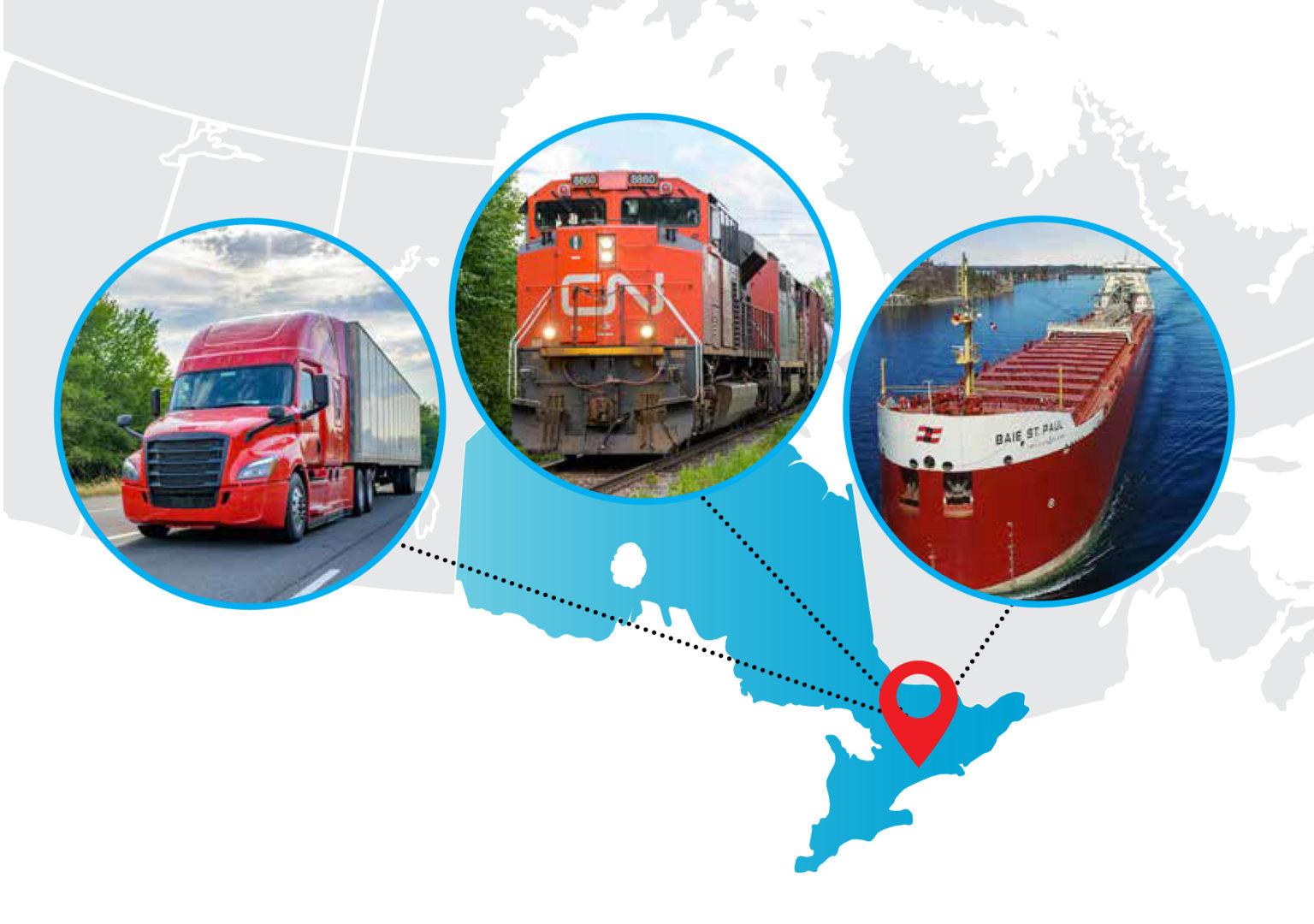
Data analytics partnership delves into the best modal balance to move goods in Southern Ontario.
The Hamilton-Oshawa Port Authority (HOPA) has teamed up with the McMaster Institute for Transportation and Logistics (MITL) to develop Fluid Intelligence: an analytical partnership focused on the various modal capabilities within Southern Ontario. The aim is to identify opportunities to collaboratively and effectively employ road, rail and marine transportation to maximize efficiencies and minimize emissions.
“We recognize the need to decarbonize transportation while bolstering supply chain resiliency,” shares Ian Hamilton, HOPA’s President /CEO. “We can significantly address these challenges by achieving a better, more creative balance among transportation modes based on data analysis and a clear understanding of the critical role each plays.”
MITL expects Fluid Intelligence to help leverage key data and analytics from existing information networks to develop insights into how to best use existing modal capacities to reduce strain elsewhere.
“Planning supply chain logistics for the truly holistic movement of goods is still in early stages,” says Mark Ferguson, MITL’s Senior Research Associate. “We’re hoping Fluid Intelligence will assist in this regard based on the best available data and analytics.”
The initiative is among several projects being supported by Transport Canada across the country to improve multimodal networks.
Fluid Intelligence will invite shippers, businesses and/or policymakers to present their supply chain or congestion challenges. Using its data and analytical tools, Fluid Intelligence will help to devise innovative solutions to streamline supply chains.
The collaboration’s first year-long project is to determine how shortsea shipping might figure more largely into multimodal equations. “We hope by sharing the findings, we will help industry to recognize potential opportunities and respond by developing and/or supporting new services,” Ferguson says.
Copious transportation data is gathered in Canada but it’s not always readily shared nor transparent.
“While we have a model that protects proprietary information, we recognize that Canada must fill certain information gaps to compete effectively with the United States, for example, where such information is readily available for business decisions,” Hamilton says.
The information being analysed includes cross-border trade data, interprovincial trade statistics, the multimodal Canadian Freight Analysis Framework, as well as the intercept surveys done by the Ministry of Transport of Ontario (MTO) Commercial Vehicle Survey (CVS) on some trucks and cargo. US data sources will also enhance efforts.
“We have some detailed information about individual truck trips, but it’s only a sampling, and comprehensive trade data on commodities by weight, but not routes taken,” Ferguson relates. “So, it’s like putting together a puzzle.”
Hamilton believes shippers are ready to take another look at shortsea shipping. “They realize there’s a shortage of truck drivers who by law must work fewer hours for safety reasons, and fewer young people who want to live a long-haul trucker’s lifestyle,” he says. “There’s also the opportunity with the marine mode to significantly decarbonize supply chains.”
The fresh look at shortsea shipping is also being done against the backdrop of increasingly congested metropolitan areas, especially the GTHA. “Heavy truck movements on intercity routes steadily increased from the mid-1980s until the pandemic shutdown in March 2020 and they’re expected to rise again,” Ferguson notes. “Something that may not have worked in terms of shortsea shipping 15 years ago has a better chance now given the shifting attitude we’re seeing among the shippers we’ve consulted.”
Hamilton emphasizes that none of this is calling for a full modal shift. “We’re just talking about creating the best modal balance,” he says.
MITL’s analysis is also looking at what’s been done well elsewhere. “The Richmond Marine Terminal, approximately 150 kilometres (93 miles) inland from the Port of Virginia, has used shortsea shipping between the two points to remove some 130,000 containers off the road over the past decade even though there is a parallel Interstate route,” Ferguson says. “As a result, Amazon, Lidl and others have chosen to establish large facilities near the inland marine terminal, diversifying the economy.” The report’s findings will be made public in the fall.